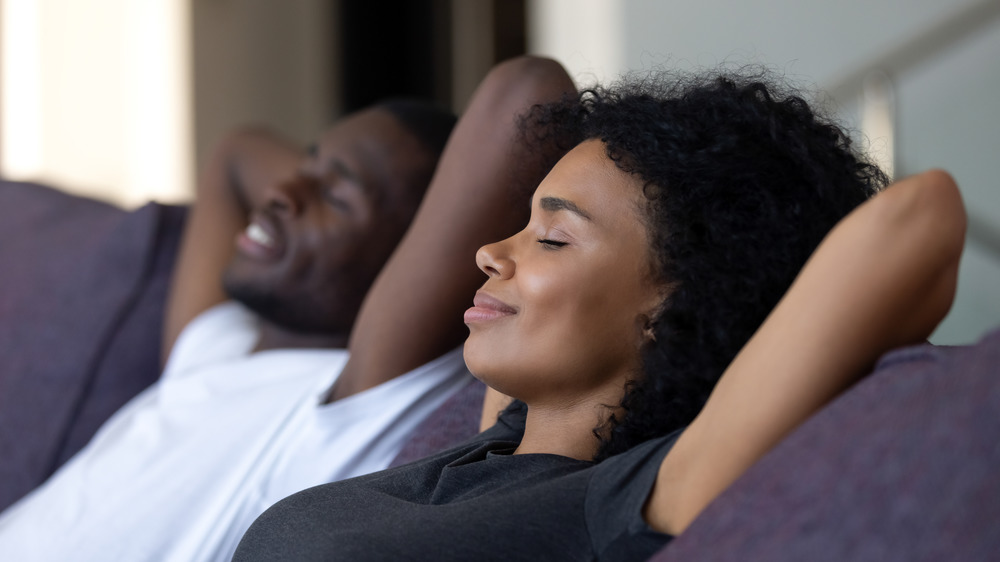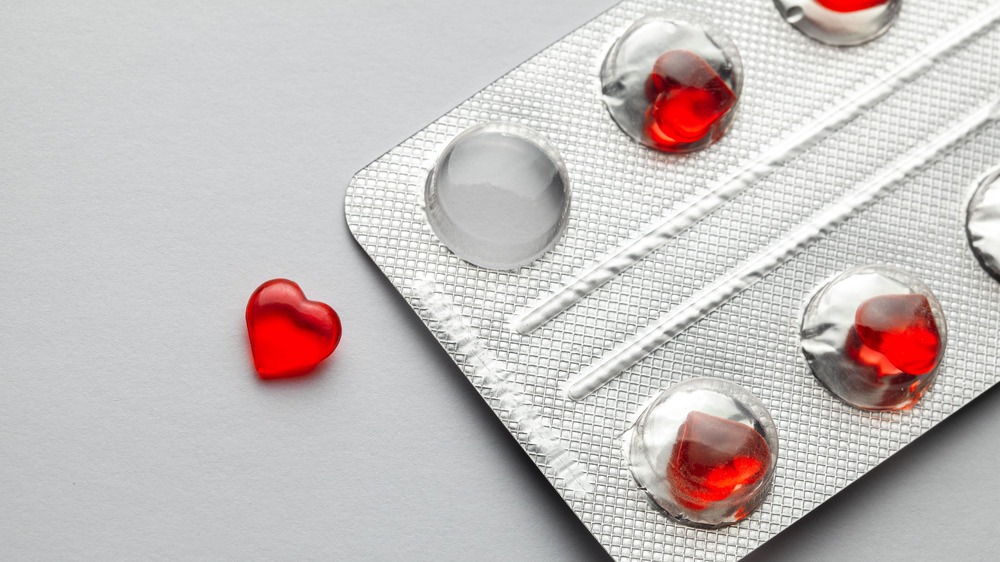The Reason Being In Love Could Make You Feel Less Pain
Ah, euphoric, passionate, all-consuming love! When we initially fall for a special someone, it affects us in so many wonderful emotional ways. We're exhilarated, constantly daydreaming about our lover, feeling excited about the next time we'll meet, and experiencing an overall surge of energy and well-being.
And let's not forget the physical effects. New couples are renowned for not being able to keep their hands off each other. There's an intense sexual drive, especially at the beginning, which keeps newly in-love partners coming back for more. In fact, scientists say that the same regions of the brain are activated in love as when an addict is hooked on a drug. Studies have indeed proven that the heightened feelings experienced by a person gazing at their lover's photo are similar to those experienced by an addict taking a hit (per LiveScience).
But being in love does more than activate a person's sexual parts and make them high. It may also dull feelings of physical pain.
Studying love and pain
A study conducted by Stanford University School of Medicine and published in PLoS ONE examined whether "love-induced analgesia" was real, and how it was processed in the brain. For the study, 15 participants were recruited who were in the first nine months of a new romantic relationship. While each participant was subjected to moderate to high thermal pain, they were asked to do one of three things: look at photos of their romantic partner, look at photos of an attractive acquaintance, or complete a word-association task. Using functional magnetic resonance imaging (fMRI), the researchers determined which parts of a participant's brain were activated during each of the tasks. In addition, the participants self-reported how much pain they felt during each task.
Of the three tasks, the one where the loved one's photo was viewed and the one with the word task were both reported by participants to significantly reduce pain. However, the fMRI showed that different parts of the brain were involved with each task. Completing the word task, which produced "distraction-induced analgesia," was associated mostly with the cerebral cortex and other regions related to the exact distraction task used.
How love reduces pain
Viewing photos of the loved one, however, activated the brain's reward processing system, which includes the amygdala and hypothalamus. At the same time, there was decreased activity in the pain-processing regions.
These results show that being in love and being distracted both lessen pain, but that they each use different systems in the brain. "With the distraction test, the brain pathways leading to pain relief were mostly cognitive... associated with higher, cortical parts of the brain," Jarred Younger, Ph.D., one of the study's authors, said in a news release from Stanford University School of Medicine. "Love-induced analgesia is much more associated with the reward center... activating deep structures that may block pain.. similar to how opioid analgesics work."
It's hoped that studies like this will help scientists find alternate, non-pharmacologic, ways to relieve pain, making use of the neural-rewards pathways triggered by love. If you're suffering from, say, ongoing back pain, it's not time yet to toss out your meds and recruit a new lover. But if you happen to meet and fall in love with someone in the meantime, you just may find you have a little less pain in your life.



